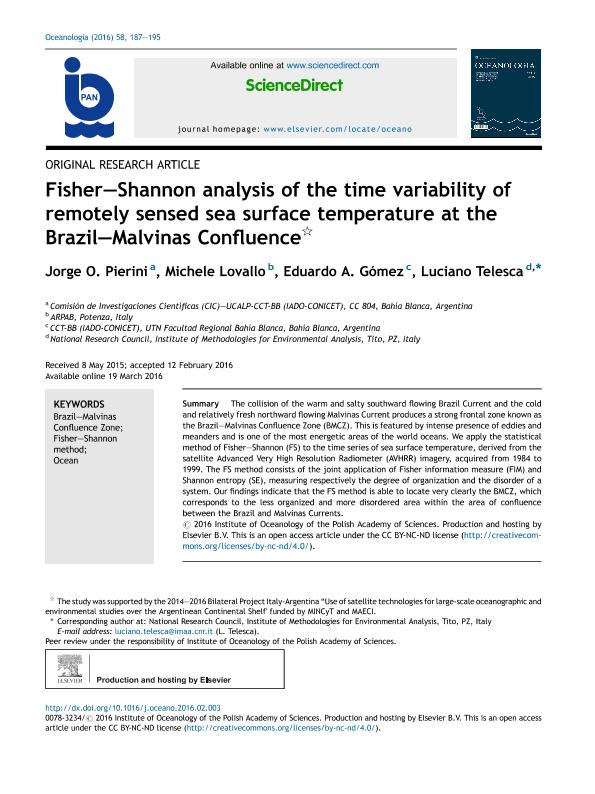Artículo
Fisher-Shannon analysis of the time variability of remotely sensed sea surface temperature at the Brazil-Malvinas Confluence
Fecha de publicación:
07/2016
Editorial:
Elsevier
Revista:
Oceanologia
ISSN:
0078-3234
Idioma:
Inglés
Tipo de recurso:
Artículo publicado
Clasificación temática:
Resumen
The collision of the warm and salty southward flowing Brazil Current and the cold and relatively fresh northward flowing Malvinas Current produces a strong frontal zone known as the Brazil—Malvinas Confluence Zone (BMCZ). This is featured by intense presence of eddies and meanders and is one of the most energetic areas of the world oceans. We apply the statistical method of Fisher—Shannon (FS) to the time series of sea surface temperature, derived from the satellite Advanced Very High Resolution Radiometer (AVHRR) imagery, acquired from 1984 to 1999. The FS method consists of the joint application of Fisher information measure (FIM) and Shannon entropy (SE), measuring respectively the degree of organization and the disorder of a system. Our findings indicate that the FS method is able to locate very clearly the BMCZ, which corresponds to the less organized and more disordered area within the area of confluence between the Brazil and Malvinas Currents.
Archivos asociados
Licencia
Identificadores
Colecciones
Articulos(IADO)
Articulos de INST.ARG.DE OCEANOGRAFIA (I)
Articulos de INST.ARG.DE OCEANOGRAFIA (I)
Citación
Pierini, Jorge Omar; Lovallo, Michelle; Gomez, Eduardo Alberto; Telesca, Luciano; Fisher-Shannon analysis of the time variability of remotely sensed sea surface temperature at the Brazil-Malvinas Confluence; Elsevier; Oceanologia; 58; 3; 7-2016; 187-195
Compartir
Altmétricas




